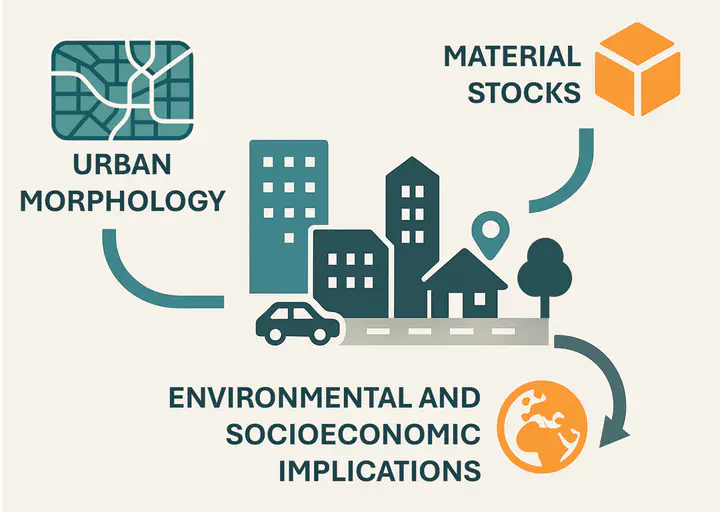Exploring the material stock - urban form nexus for urban sustainability

As the built environment continuously grows, so does the accumulation of materials in buildings and infrastructures. This has dramatic environmental impacts: resource extraction and waste generation are ever-increasing, and the transformation of resources into buildings and infrastructures stands for 11% of global carbon emissions. A better understanding of the role that urban planning – more specifically urban morphology – plays on the type and quantity of materials accumulated in the built environment is key to minimize environmental impacts linked to urban development. At the same time, the built environment should be developed so that it provides its intended functions that contribute to human well-being. This project uses a systems perspective to include, understand, and analyze interrelations between built environment material stocks, morphological types (e.g., buildings, roads), their spatial characteristics, the function they provide (e.g., shelter, transport), and socioeconomic and environmental implications of different urban forms. At the core of this project is the integration of two disciplines with a strong systems perspective tradition: built environment stock modeling and urban morphology.
